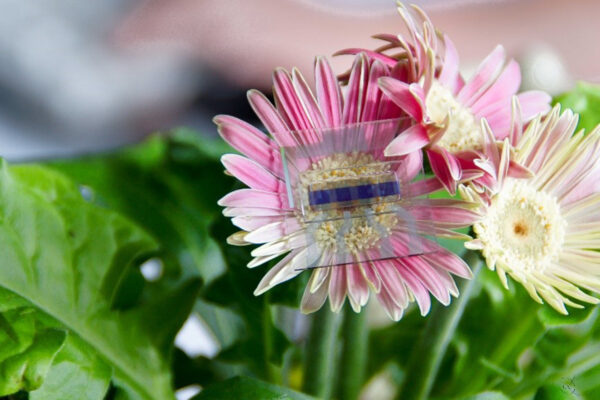
Organic solar cell emits light
A fundamental loss mechanism in semiconductors is the emission of light to maintain the thermodynamic equilibrium between material and environment. It is precisely this balance between light absorption and emission in the semiconductors that is responsible for the fact that “an ideal solar cell is also an ideal light-emitting diode”, – this thesis by Johannes Benduhn from the Institute of Applied Physics at Dresden University of Technology (TU) that at first glance seems surprising, but is ultimately logical. On the basis of this thesis, his research group has combined both functions in a single component.
However, there are other loss mechanisms in organic solar cells that have so far stood in the way of the implementation of this principle. These mechanisms cause the recombination of charge carriers in the form of heat – without emitting light. They thus reduce the tappable voltage and consequently the efficiency of the solar cell. These “non-radiating” voltage losses are one of the main reasons for the lower efficiency of organic solar cells compared to established silicon-based technologies, which are currently being used in large numbers on rooftops. With the newly developed organic solar cells, the Dresden-based group was able to keep these voltage losses comparatively low and thus pave the way for efficient and completely new areas of application.
The research team has developed combinations of organic semiconductors based on electron acceptor and electron donor transitions that function both as solar cells and LEDs. The results of this research work extend the current understanding of organic semiconductors. For the first time, they combine the physical description of organic solar cells and OLEDs.
These findings have the potential to enable commercially available OLEDs in smartphone displays or television screens to be made more energy-efficient in the future. The new organic solar cells can also be used for the efficient conversion of ultraviolet and blue photons into electrical power, e.g. in indoor applications for the electrical supply of Internet of things devices or as semi-transparent solar cells in glass facades.
Related articles:
OLED outcoupling layer is wavelength and viewing-angle independent
Holst Centre and Fraunhofer FEP unroll the world’s longest OLED
infinityPV integrates LEDs into its solar films
 If you enjoyed this article, you will like the following ones: don't miss them by subscribing to :
eeNews on Google News
If you enjoyed this article, you will like the following ones: don't miss them by subscribing to :
eeNews on Google News




